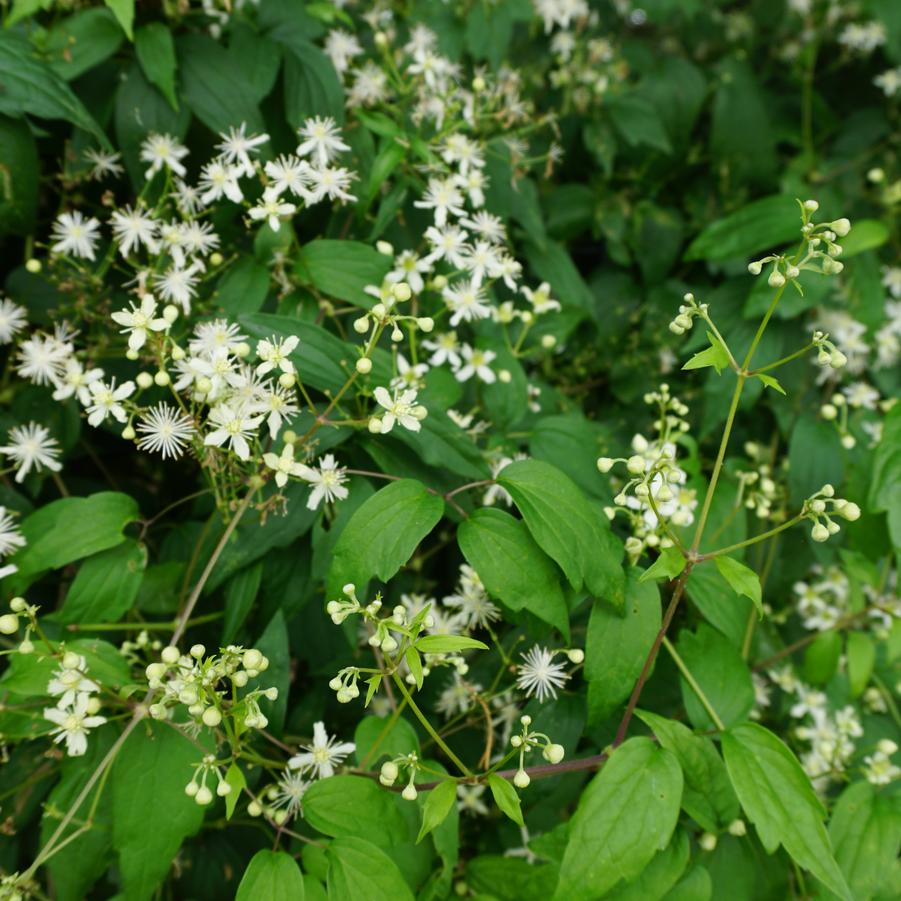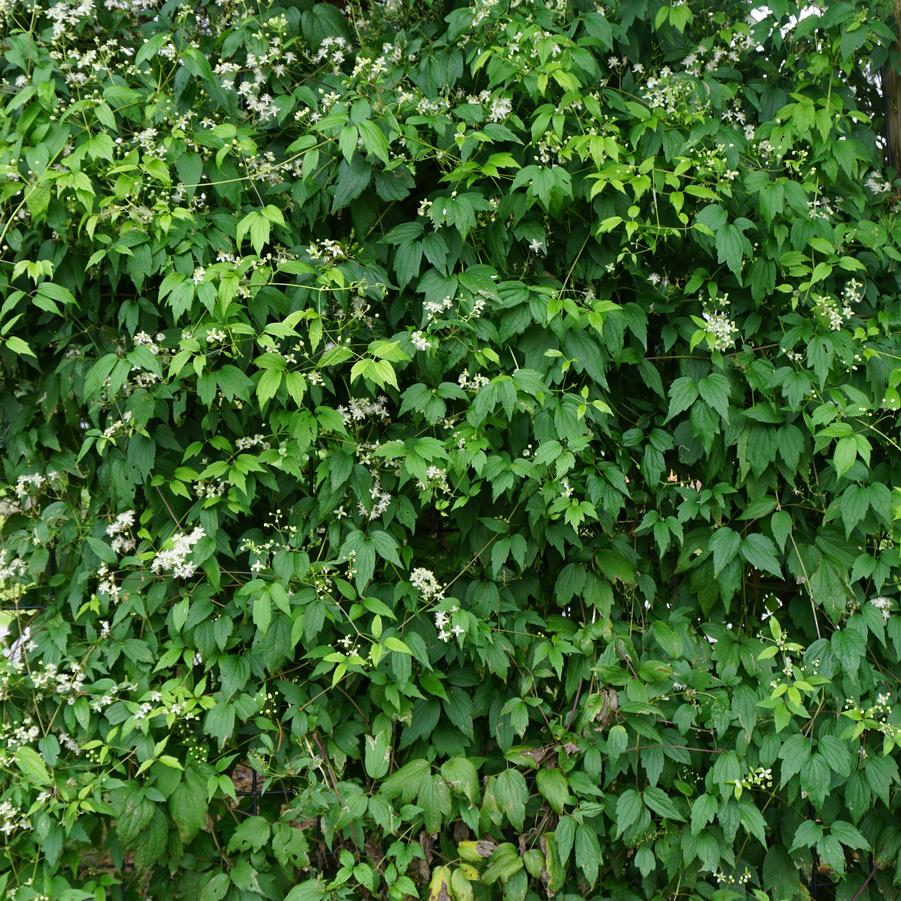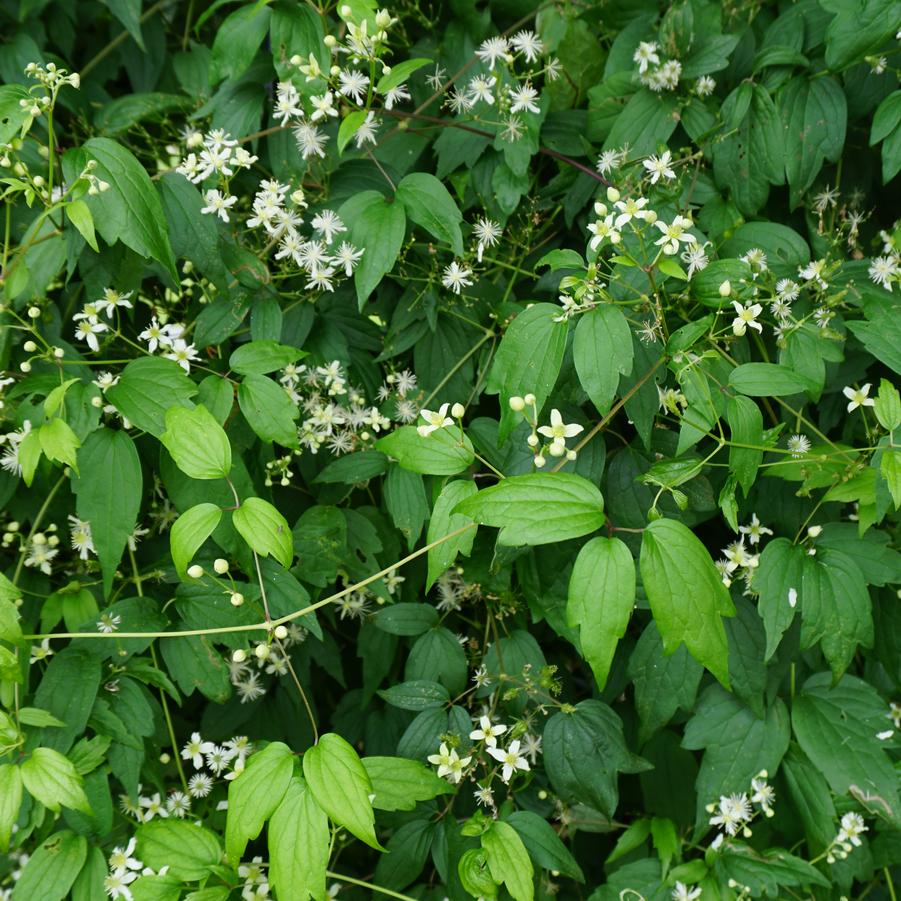





Plant Calculator
Enter the approximate length and width of the area you will be planting and click 'Calculate' to determine how many Clematis virginiana you will need.
Correct and successful spacing is complex and depends on project conditions. We encourage you to call us at 877-ECO-PLUG for project specific recommendations and further assistance.
Clematis virginiana
old man's beard (virgin's bower)
- Category: Vine, Native
- Hardiness Zone: 3-8
- Height: 12-20 Feet
- Spread: 3-6 Feet
- Spacing: 3-6 Feet
- Bloom Color: White
Blooming in late summer-early fall, this vigorous native Clematis virginiana is covered in showy, sweetly-scented white flowers that are 1" across. A fine addition to fences, on trellises, or trained up trees, Virgin's bower grows 12-20' tall. Commonly found in moist, woodland edge areas east of the Mississippi, it grows well in full sun but also can tolerate dry shade.
Green Infrastructure
| • | Woodland |
Wetland Indicator Status
| • | Falcutative (FAC) |
Plug Type
| • | Horticultural Plug |
Propagation Type
| • | Open pollinated |
Additional Information about Clematis virginiana
"While Clematis species are very popular in the nursery trade, this one is conspicuously absent, much due to its incredible vigor and small flower size. It should not be so easily overlooked. Most people think of trellises as a 2'x6" meshed frame purchased at Menards or other garden center. I have strung wires from the base of older trees and strung them to the lower branches and let the vine go where it will. The effect can be stunning—a large vertical column of foliage and effervescent white blooms with very interesting seedheads into winter. This provides untypical vertical structure and a excellent habitat for insects and birds in your garden. Also unlike many non-native Clematis species this is widely adaptable to most garden soils and suffers few nutrient issues as is common in the hybrids." - Minnesota Wildflowers
A native replacement to the invasive sweet autumn clematis (Clematis terniflora), you can tell the difference between the two plants by the foliage. Native Virgin's bower has trifoliate leaves with toothed edges and a smoother leaf texture while sweet autumn clematis has trifoliate leaves that are entire (smooth) around the edges and has a coarse texture to the leaf surface.
Clematis virginiana supports much wildlife. Hummingbirds and bees enjoy the nectar while songbirds roost in the foliage. The stems, stalks, and leaves of the plant are toxic. "The nectar of the staminate flowers attracts Halictid bees (including Sphecodes clematidis), wasps, and various kinds of flies. Insects that feed destructively on Virgin's Bower and other Clematis spp. include larvae of Contarinia clematidis (Clematis Bud Gall Midge) and Prodiplosis floricola (Clematis Flower Midge), larvae of the leaf-mining fly Phytomyza loewii, caterpillars of Horisme intestinata (Brown Bark Carpet Moth), caterpillars of two moths, Thyris maculata (Spotted Thyris) and Thyris sepulchralis (Mournful Thyris), and Myzus varians (Peach Leaf-Roll Aphid). These vines are the summer hosts of this introduced aphid." - Illinois Wildflowers
Growing & Maintenance Tips for Clematis virginiana
C. virginiana has a vigorous, twining habit. Blooms show best when given adequate support and access to sunlight. Can sucker and self-sow. If using nearby shrub as support, be sure to check in on the plant that the Clematis isn't overpowering it. Trim back as needed. Plants can be given a hard cut of 8-12" from the ground in late fall-early spring to rejuvenate growth and to curtail spread. Plant does not require cutback - as the plant ages, the green stems will turn woody. No serious disease or pest issues.
